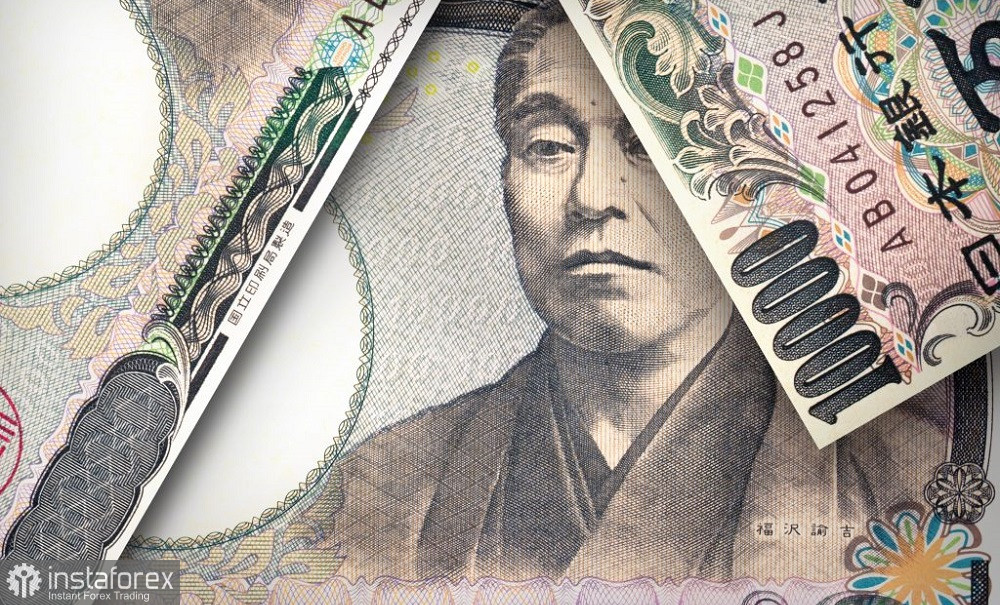The yen is appreciating against the dollar once again. After a brief pause, the USD/JPY pair has resumed its downward movement and is now attempting to break through the support level of 140.70 (the lower line of the Bollinger Bands indicator on the D1 timeframe). The pair is again reaching new multi-month price lows, with the last time it was in this price range being in late December 2023. If USD/JPY bears break below the 140.27 target, the pair will hit a new yearly low. Judging by the strength of the downward trend, traders are unlikely to stay within the 140 range and may soon settle below the 140.00 level. The only factor that could help USD/JPY buyers is if the Federal Reserve delivers a "moderately hawkish" message next week, but that seems unlikely.
The primary driver of the USD/JPY pair's decline is the growing divergence in monetary policies between the Bank of Japan and the US Federal Reserve. While the Japanese regulator is preparing for the next round of rate hikes, the U.S. Federal Reserve is contemplating whether to cut rates by 25 or 50 basis points at its September meeting.
This time, volatility in favor of the yen was triggered by specialists from the Fitch Ratings agency. In their latest report on Bank of Japan policy, they suggested that the central bank could raise rates to 0.5% by the end of this year, to 0.75% in 2025, and finally to 1% by the end of 2026. On the one hand, the pace of monetary tightening seems measured, but on the other hand, this forecast implies that the Bank of Japan is expected to make another rate hike (the third in this cycle) at its December meeting.
This view is not unique to Fitch Ratings strategists. Yesterday, Bloomberg published a survey of leading economists from major financial institutions, showing that hawkish sentiments dominate the market. Nearly 90% of the 53 respondents predicted a rate hike by the Bank of Japan by the end of January 2025, with more than half (53%) considering December the most likely month for such a move.
Additionally, five of the nine members of the Bank of Japan's Board of Governors have indicated in recent weeks that another rate hike is possible—"if the central bank's inflation expectations are met." For instance, BOJ representative Hajime Takata recently stated that the regulator would gradually adjust rates "if the economy and prices align with our forecasts."
Inflation growth data for Japan in August will be published just hours before the announcement of the results of the Japanese central bank's September meeting. Clearly, this release will either harden or soften the central bank's tone. Recall that the overall consumer price index is stuck at 2.8% year-on-year. Meanwhile, the core index accelerated again in July to 2.7% annually, marking the third consecutive month of growth. If August inflation follows a similar trajectory (or remains in the "green zone"), the yen will receive significant support, as the probability of another rate hike this year will increase.
In other words, the current fundamental background supports further strengthening of the Japanese currency.
The U.S. dollar index has been declining for two consecutive days. The market remains uncertain about the possible outcome of the Federal Reserve's September meeting. After the release of August's Nonfarm Payrolls report, the likelihood of a 50-basis-point rate cut dropped to 18-19%. However, inflation reports published this week have rekindled doubts regarding the Federal Reserve's next move.
To summarize briefly, the U.S. CPI growth report came out as expected: the overall consumer price index slowed to 2.5% year-on-year, while the core remained at 3.2%. The PPI growth report came in the "red zone": the overall producer price index fell to 1.7% (with a forecast of 1.8%), while the core index rose to 2.4% (with a forecast of 2.5%).
As a result of these releases, dovish expectations have increased: according to the CME FedWatch tool, the likelihood of a 50-basis-point rate cut now stands at 44%. The probability of a 25-basis-point cut is estimated at 56%. The chances are nearly equal.
Other fundamental factors have also contributed to the increase in dovish expectations. For example, The Wall Street Journal published an article yesterday stating that the Federal Reserve is still deliberating over how much to cut rates ("whether to take a small or big step"). The journalists lean toward the idea that a more decisive move on monetary easing "might be more appropriate." JP Morgan analysts also issued a dovish forecast, suggesting that the Fed will cut rates by 50 basis points not only in September but also in November and December. Adding fuel to the fire, former New York Fed President William Dudley stated that there are currently ample reasons for a 50-basis-point scenario.
Against such signals, the dollar is facing significant pressure.
Technical Analysis
From a technical standpoint, the USD/JPY pair is testing the 140.70 support level on the D1 timeframe (the lower line of the Bollinger Bands indicator, and simultaneously the lower boundary of the Kumo cloud and the lower Bollinger Bands line on the W1 timeframe). Short positions should be considered after the bears push through this level and consolidate below it. The downward targets are 140.00 and 139.50, with a long-term target of 132.00 (the lower Bollinger Bands line on the MN timeframe).
 English
English 
 Русский
Русский Bahasa Indonesia
Bahasa Indonesia Bahasa Malay
Bahasa Malay ไทย
ไทย Español
Español Deutsch
Deutsch Български
Български Français
Français Tiếng Việt
Tiếng Việt 中文
中文 বাংলা
বাংলা हिन्दी
हिन्दी Čeština
Čeština Українська
Українська Română
Română

